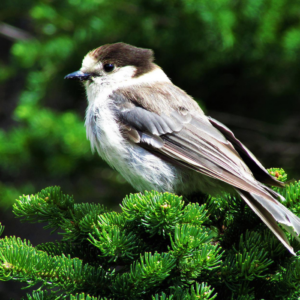Raising A Green Fledgling – Part 3 – Forging an early connection to nature
Hello Readers,
This week I’d like to focus on a couple of indirect ways in which my wife and I are trying to forge our daughter’s connection to nature as she grows.
 The idea for this post started as I was looking at my daughter’s growing book collection. Yes, that’s right, she’s not even 7 weeks old and we already have tonnes of books. And tonnes of music – but that’ll be a later installment in this series. We make sure to read, sing, hum and chat to our little one as much as possible to help her on her way.
The idea for this post started as I was looking at my daughter’s growing book collection. Yes, that’s right, she’s not even 7 weeks old and we already have tonnes of books. And tonnes of music – but that’ll be a later installment in this series. We make sure to read, sing, hum and chat to our little one as much as possible to help her on her way.
Anyway, back to the point: I noticed that the majority of her books and music had some sort of nature theme. This is nothing extraordinary, of course, but I think it says something about the types of environmental values we hope to instill in our family.
I noticed books such as “On The Night You Were Born“, by Nancy Tillman; “Baby Beluga“, by Raffi and Ashley Wolff; “Panda Bear, Panda Bear What Do You See?“, by Bill Martin, Jr. and Eric Carle; “I Like Bugs“, by Lorena Siminovich; “Walking With Mama“, by Barbara A. White; “Just Me and My Dad“, by Mercer Mayer; “The Very Quiet Cricket“, by Eric Carle; and of course “The Lorax” by Dr. Seuss. There are of course many others I’ve neglected to list.
Several of these books talk about wildlife as an inherent part of our world – as part of the human experience, while others focus on directly experiencing nature and the countless critters that comprise it. Baby Beluga gives a special nod to a federally-listed species at risk, too. “Panda Bear…”, “On the Night…” and “The Lorax” go a step further to deal with conservation themes, quite eloquently and directly in the case of the Seuss book.
These are important messages we want to convey to our daughter.  We want her to grow up understanding how we fit into nature and what opportunities we have to decrease our negative impacts on the natural world. There are many ways to do this and so far, it seems we’re approaching it indirectly through the stories we share with our daughter. So with any luck, she’ll grow up interested in nature and aware that it is both possible – and important – to experience it.
We want her to grow up understanding how we fit into nature and what opportunities we have to decrease our negative impacts on the natural world. There are many ways to do this and so far, it seems we’re approaching it indirectly through the stories we share with our daughter. So with any luck, she’ll grow up interested in nature and aware that it is both possible – and important – to experience it.
That last point made me think of a book by one of my undergraduate professors, Peter G. Brown, from McGill University’s School of Environment. The book is called “The Commonwealth of Life” and though it’s a treatise on stewardship economics, Brown discusses the inherent right to exist held by every living thing. He also addresses the moral imperative we have, as humans, to respect those inherent rights. I’m barely scratching the surface here, but I always recall these ideas when I think about why people should care about nature. That’s just my take, and my daughter is free to come up with her own. 🙂
 There are also a couple of very special books I have to mention. My wife and I got these books more for ourselves to enjoy, but we think they hold a number of fun, timeless and valuable messages for our daughter, too. They are: “The World Needs Your Kid” by Craig and Marc Kielburger (of Free the Children fame) and Shelley Page, and “Nelson Mandela’s Favourite African Folktales” edited by Nelson Mandela. We love that “The World Needs…” shares inspirational messages and ideas by some of the world’s leading promoters of positive social and environmental change, while Mandela’s book shares some very real, valuable lessons about life and the world, told through the voices of numerous African cultures throughout the ages. Both books capture some great points about the importance of connecting to and understanding nature.
There are also a couple of very special books I have to mention. My wife and I got these books more for ourselves to enjoy, but we think they hold a number of fun, timeless and valuable messages for our daughter, too. They are: “The World Needs Your Kid” by Craig and Marc Kielburger (of Free the Children fame) and Shelley Page, and “Nelson Mandela’s Favourite African Folktales” edited by Nelson Mandela. We love that “The World Needs…” shares inspirational messages and ideas by some of the world’s leading promoters of positive social and environmental change, while Mandela’s book shares some very real, valuable lessons about life and the world, told through the voices of numerous African cultures throughout the ages. Both books capture some great points about the importance of connecting to and understanding nature.
Well, that’s it for now. Thanks for checking out this third installment in the series. And be sure to check back next week for Part 4 on the trials and tribulations of cloth diapering!
NOTE: In searching for links to the books I’ve mentioned above, I stumbled across a list of children’s nature books recommended by Virginia State naturalists. I also found this one from the Massachusetts Dept of Conservation & Recreation. That has me wondering, do other government departments, professional naturalists, naturalist clubs and associations have similar recommended book lists? Please post a comment if you know of one.



